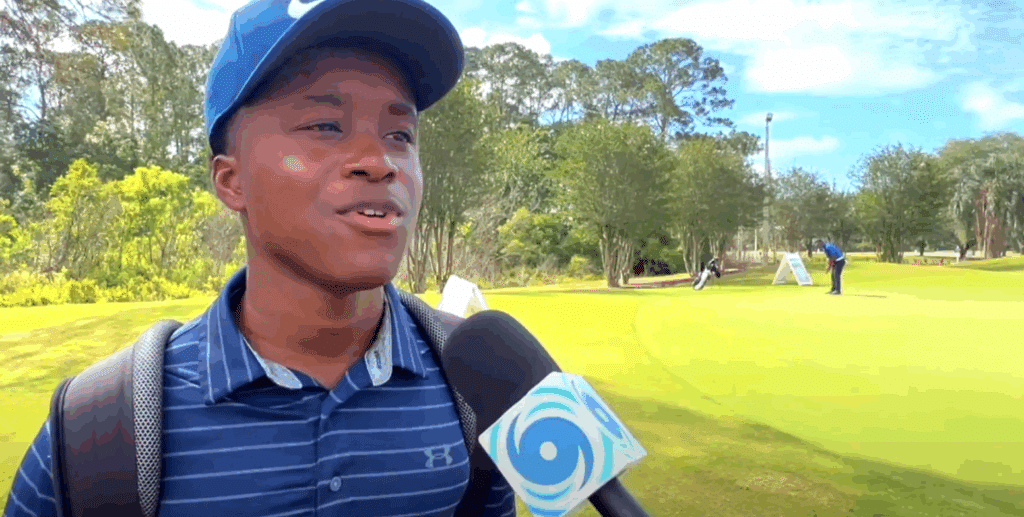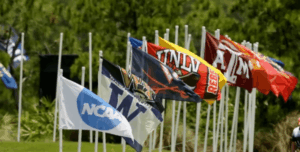By Rex Grayner, SVP Business Development, Hurricane Junior Golf Tour

The recruiting journey isn’t a one-time event. It’s a process built on consistency, communication, and continuous improvement. Whether you’re just getting started or looking to take that next big step, momentum is what keeps things moving in the right direction.
In this article, we’ll show you how to build that momentum, and keep it going, through every stage of the college golf recruiting process.
Start Strong: Lay the Foundation Early
Many families assume the recruiting process begins when college coaches start calling. But the reality is, the most successful athletes begin preparing long before that first conversation.
NCAA Division I coaches are allowed to begin contacting prospects on June 15 following a golfer’s sophomore year. From that point forward, they can call, text, email, direct message, and even make verbal offers. But if your junior golfer hasn’t already prepared a strong tournament schedule, a player resume, and an introductory message, they’ll be playing catch-up.
“Starting early gives athletes a huge advantage,” explains Brian Schiffbauer, Golf Recruiting Coach at NCSA. “The kids who stand out are those who already have profiles built and have begun networking by their sophomore year.”
Build Relationships: Communicate With Coaches the Right Way
Strong communication is at the heart of every recruiting relationship. Coaches want to hear from players who show genuine interest, not generic emails or copy-and-paste messages sent to 50 schools.
When reaching out to coaches, players should:
- Personalize their message based on the program.
- Share upcoming tournament schedules and highlight videos.
- Stay in touch consistently, without overdoing it.
Building relationships means being a good communicator and a good competitor. And when it comes to communicating with college coaches, your child should take the lead.
The recruiting process is about the student-athlete, not the parent. Coaches want to build a relationship with the person who will be on their team, and that means hearing directly from the player.
Encourage your child to write their own emails, place their own calls, ask their own questions, and follow up after events or conversations. It doesn’t have to be perfect. What matters most is effort and initiative.
Stanford University’s head men’s golf coach Conrad Ray says that “the worst thing for [coaches] in our world is if we get a phone call and it’s the mom or dad of a high school freshman or sophomore telling me how good their kid is.”
Stand Out by Framing Your Performance
Tournament results alone don’t tell the whole story. Coaches are looking at how those results were earned, whether a player showed resilience, competed against strong fields, or demonstrated consistency under pressure.
Instead of simply listing scores, help coaches understand what those rounds meant. Were conditions tough? Was it a bounce-back performance? Was it your first time in a national event?
The most effective way to stand out isn’t by trying to impress. It’s by showing growth.
Use Video to Open Doors
One of the most important tools in your recruiting toolkit is your video. A clean, 3-hole video can often be your first impression.
The ideal recruiting video is about five minutes long and filmed on the golf course, where coaches can see you play real holes, not just hit balls on the range. The “3-Hole Video” concept is simple yet incredibly effective. (Learn more about Creating the Ultimate College Golf Recruiting Video).
Understand the Scholarship Landscape
When it comes to scholarships, there’s a lot of misunderstanding out there. Golf is an equivalency sport, which means full-ride offers are rare. Most scholarships are split across multiple players, and the top teams often combine athletic and academic aid to build packages.
“We’re constantly evaluating the full picture,” says a Division I women’s golf coach we recently visited with. “Academics, character, and how they compete under pressure. A strong student makes our job easier.”
That means your junior golfer’s character, grades and attitude can play just as big a role as their scoring average. (Learn more in The Truth About Golf Scholarships)
Maximize the Summer: Prime Time for Exposure
Summer is the best time of year to gain exposure, play your best golf, and communicate with coaches. Schedules are more open, travel is easier, and most recruiting windows are active. June 15 stands out as a major milestone, but the weeks before and after that date are filled with opportunity.
Here’s how to make the most of it:
- Play strategically. Local events can keep the momentum going. But also choose events that stand out on your tournament resume (and where college coaches may be watching), such as HJGT College Prep Series events.
- Be coach-ready. Have your video and tournament resume updated before June 15.
- Keep in touch. Follow up with coaches after each tournament, especially if you posted a strong finish.
Final Thoughts: Keep the Ball Rolling
College golf recruiting isn’t about one breakthrough moment. It’s about progress. It’s about doing the small things consistently, staying prepared for big opportunities, and continuing to grow on and off the course.
If you keep showing up, improving your game, and communicating with intention, your momentum will build.
And that’s when the recruiting doors really begin to open.
*****
Need assistance navigating the path to college golf? Contact HJGT for recommended strategies and additional resources.




